19/11/2020 11:30 AM
The days are already getting shorter and the colours in our gardens and the countryside are changing to the autumn pallet of glorious golds, russets, oranges and rich reds. Now is a good time to check your fence will survive the winter.
There’s a lot to be said in favour of the brilliant blue skies and bright sunshine we can often experience throughout the autumn months. Perhaps it’s nature’s way of compensating us for the loss of the strong summer sun, to give us the sweet and mellow version of sunshine, to help ease us into the chilly and sometimes seemingly unending greyness that we endure in the winter.
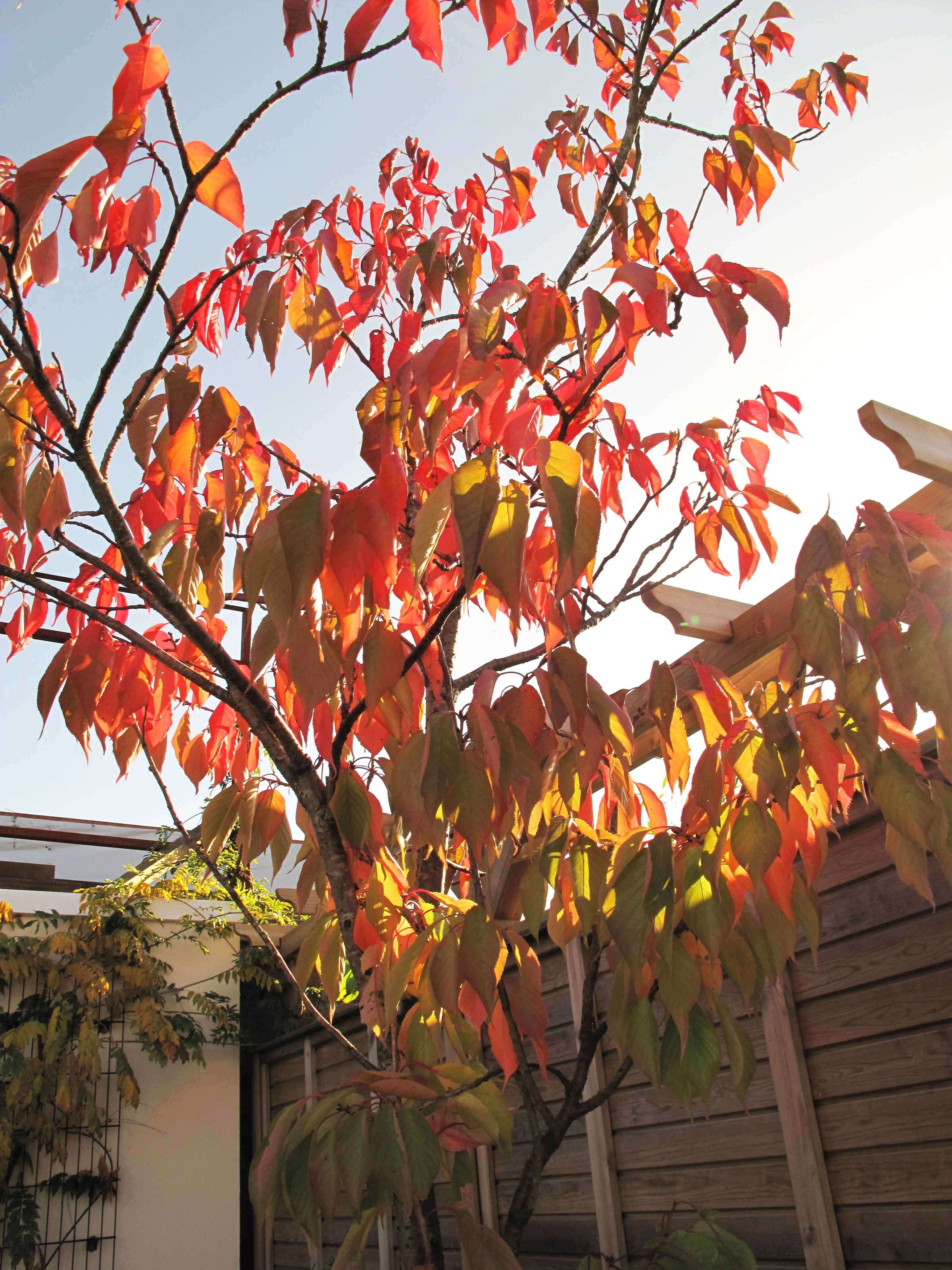
In these transitional months the weather is perfect for remedial action in the garden, as it’s naturally a time for getting things done rather than indulging in the more ‘chilled out’ garden pursuits of sunbathing and barbeques. So now’s the time to take stock and assess how things, like your fencing is going to stand up to the wilder weather we’ve been known to experience over the last few years.
If a fence is looking a little worse for wear, it may be worth considering a new fence that will stand up to the winter storms, and will also do a good job of keeping you and your property more secure once the darker evenings set in.
Below are a few points to consider with a new fence in mind and can also be helpful when questioning if your current fence will hold out during the winter:
Posts failure
One of the most common causes of fences not staying where you want them to be - which is hopefully upright - is because the posts are of inferior quality. If you see a fence at a funny angle, look down at where the posts meet the ground, quite often you will see the reason the fence is leaning in a precarious manner is because the posts have rotted at ground level. If you think about it a fence panel is a bit like a sail, a large flat surface that will by its very nature catch a hefty dose of wind – the wind loading on the panel will put a fair amount of strain on the posts at the fixed point they go into the ground, any weakening in the post due to continued soaking in the ground, bad quality timber and lack of treatment, and the post will eventually snap like a match stick!
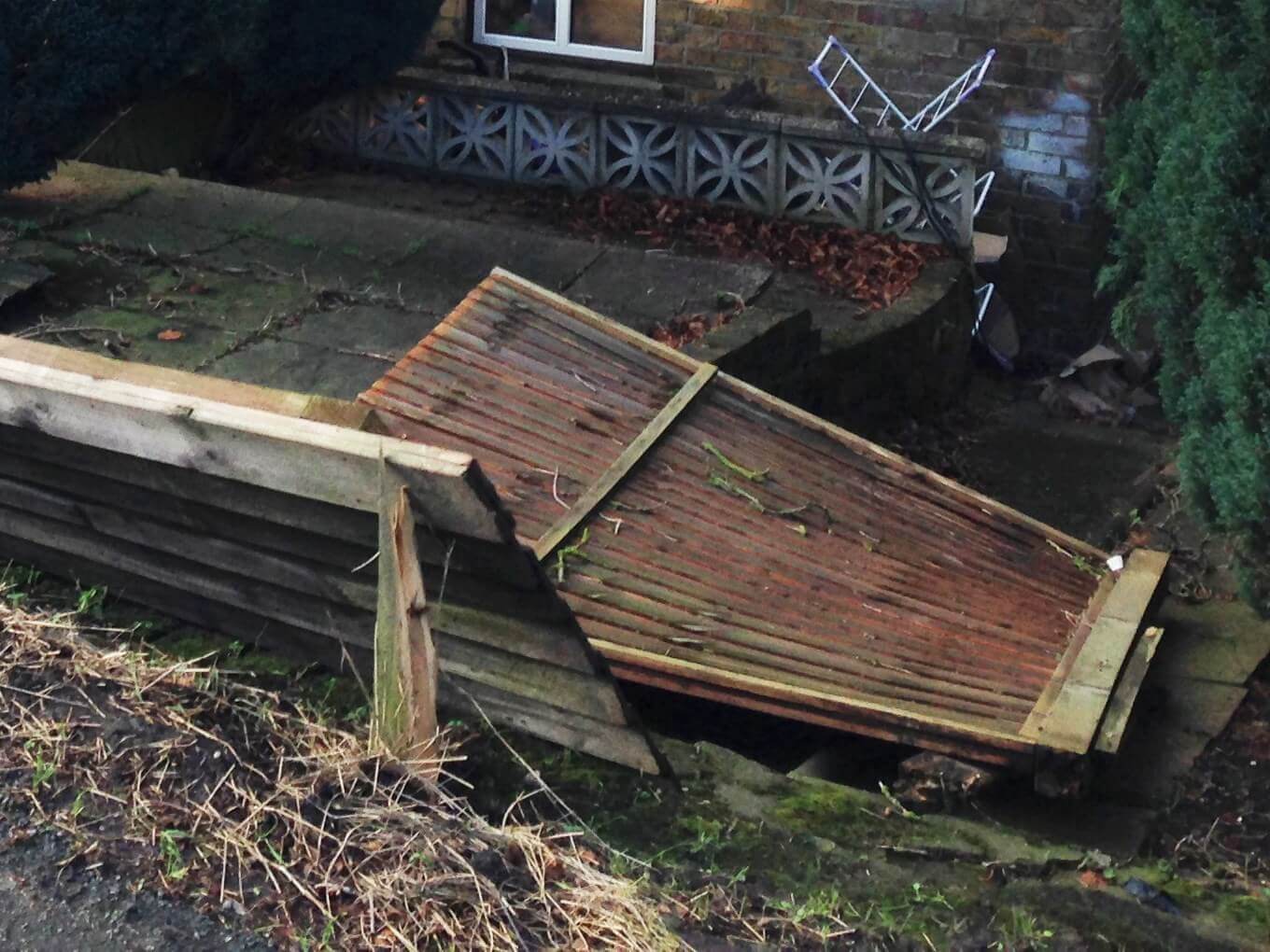
Excellent treatment
By ‘inferior quality posts’ we mean they are made from a type of timber that is not suitable for in-ground use. Not all timber species are suited to treatment or will take up the chemicals involved. Here at Jacksons we make our posts and gravel boards - and any product that will be in contact with soil, from a different type of timber to our panels or for that matter, any other products like gates or rails that will have little or no contact with the ground.
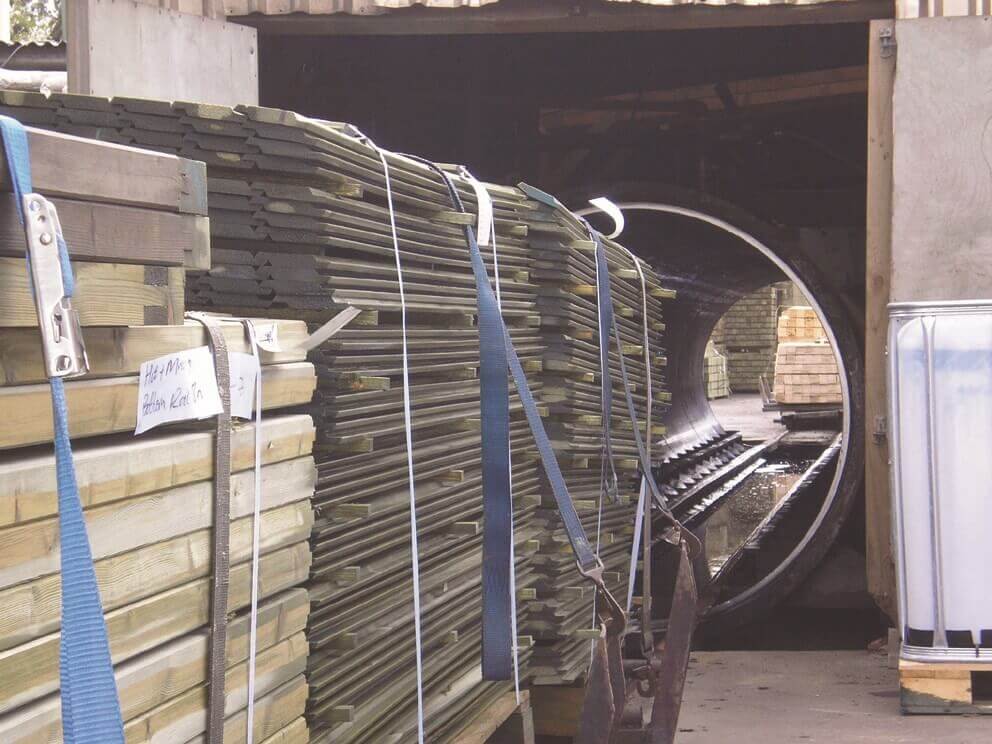
Not only is the type or species of timber of paramount importance, but the type of treatment it undergoes is vital too. Jacksons kiln dry all their timber to below 28% moisture content, then it is put into a vacuum pressure tank, which forces the treatment chemical deep into the cellular structure of the timber, almost to the heart wood. This then solidifies, strengthening the timber and making it almost impervious to rot or wood boring pests. This is what allows the increased life span of the timber used by Jacksons and this means the 25 year guarantee is possible.
Strong fence foundations
Imagine you go to all the trouble of buying superior product; properly treated high quality fence panels and posts, but then scrimped on the length of the posts? It is commonly accepted that the post needs to have at least 600mm below ground, and this needs to be secured firmly in a straight sided hole with a bit of drainage at the bottom of the hole (usually ballast or gravel so the post doesn't sit in water) and with at least 60Kg concrete (3 bags of Postcrete) securing it, for a 1.8m high (above ground) fence post. If you try to save money by scrimping on any of this it will undermine the fence’s ability to withstand strong winds.It’s worth mentioning that in some really exposed situations investing in heavy duty, extra length posts may be called for, remember the higher the fence, the more wind loading there will be, so the stronger the posts need to be too.
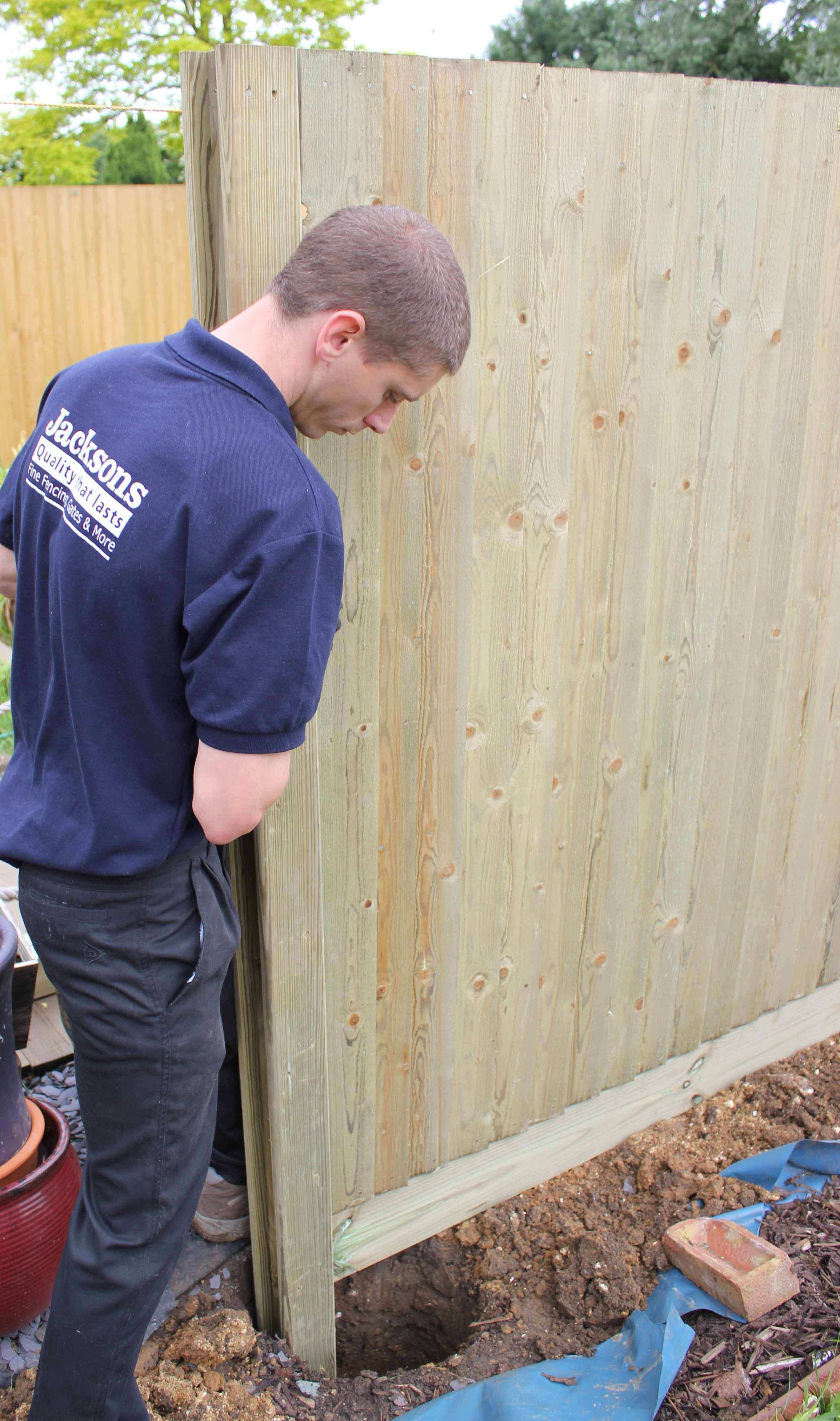
Take a load off using semi sold panels
Talking of wind loading, if your site is subject to very strong winds, consider using fence panels that offer less wind resistance. There are many good-looking fence panels in the market place that we refer to as semi-solid, for instance Venetian, Canterbury Combi, Hit and Miss or Louvre, they offer varying degrees of wind resistance with gaps between pales, that allow air to pass through whilst still giving some protection and privacy. So it’s well worth considering this as an option for exposed sites. View our fence panel range that includes out semi-solid panels
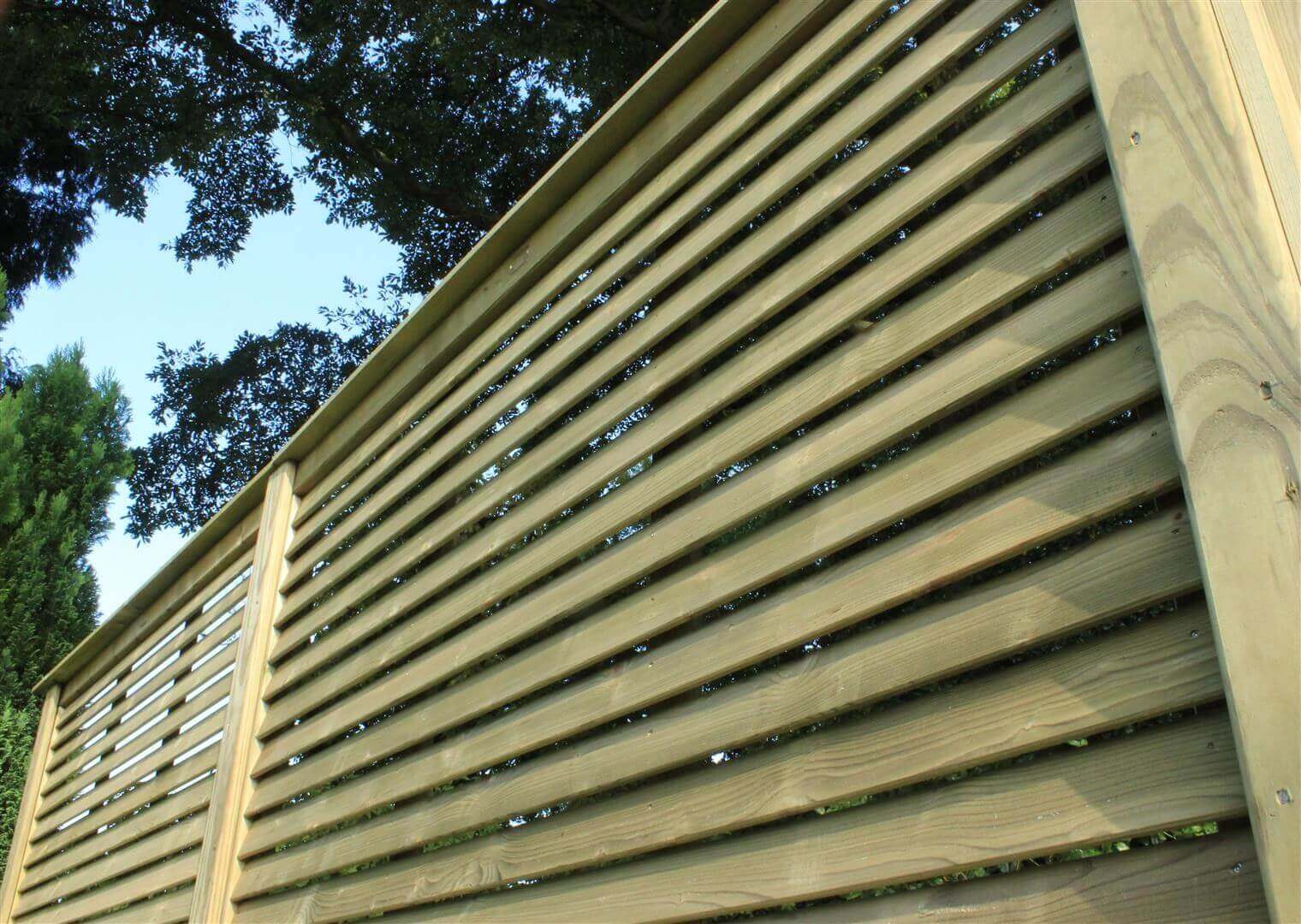
Non-rust
When mentioning the importance of not scrimping on various things like posts and proper foundations, here’s another very important tip. If you are using good quality materials and the best installation practices, that could all be wasted by failing to use the right fixings – nails and screws that are either not galvanised or stainless steel will rust after a couple of years – not only does this ruin the look of a fence, you’ve probably seen the way rusty nails leave horrible brown trails down anything they are in, once the metal starts to oxidise. It looks bad, but even worse it can mean the fixing will fail and eventually the panel will come apart, or away from the posts. So always make sure your fittings or fixings are good quality, non-rust stainless steel or galvanised products.
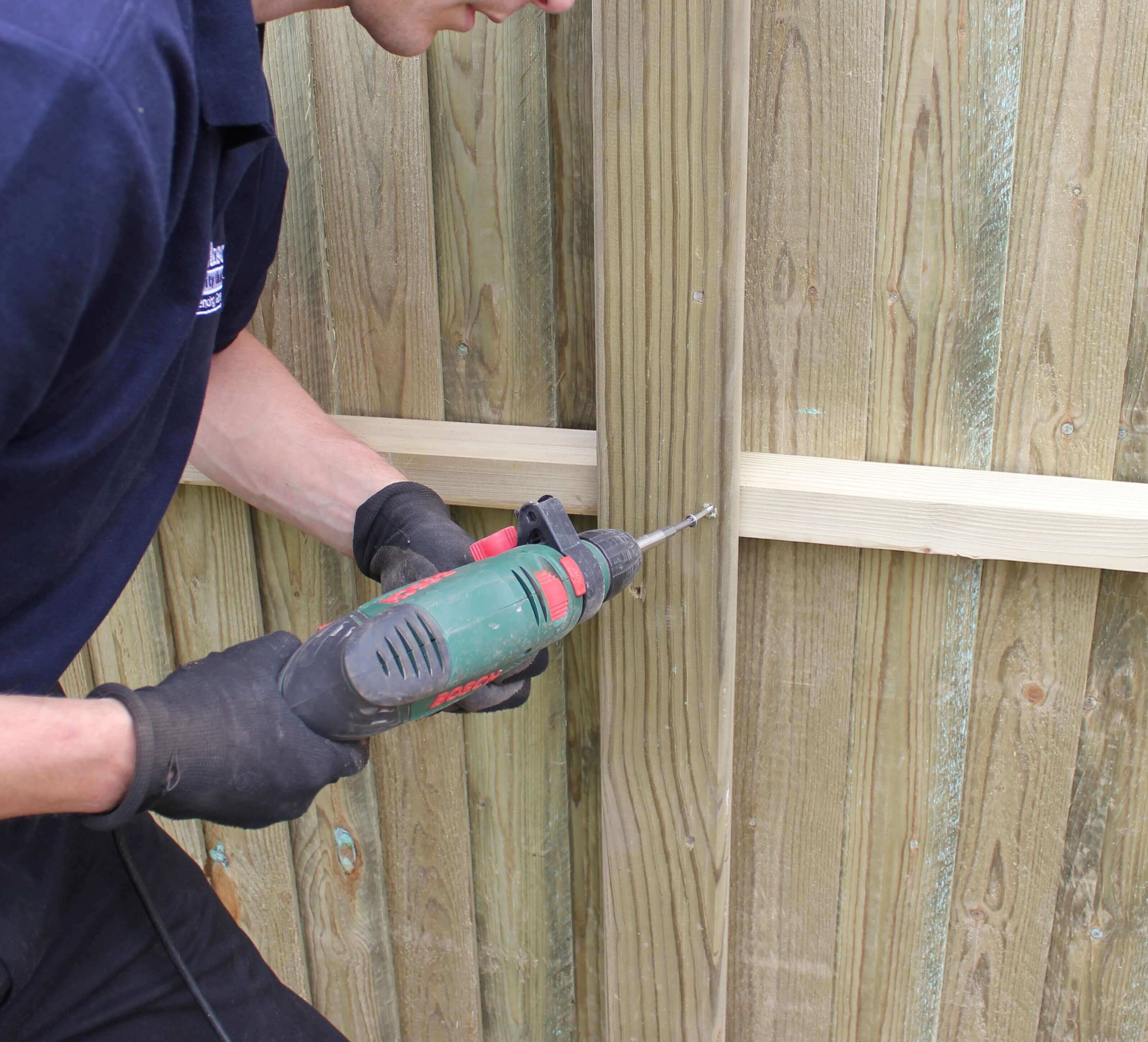
A fence is only as good as its installation
Finally, a word on what most people consider the trickiest part of replacing a fence and that’s putting it up. Most people would finding it fairly daunting if you’ve never done it before, but if you are fit and able, and can get some friends and family to help, it can be a successful and satisfying DIY project. We have some handy installation guides you can download to help.
Ask for recommendations from people you know and trust to find installers that are local to you that have done a good job, also ask them to give you an idea of what they were charged to help you have an idea of what the costs are likely to be.
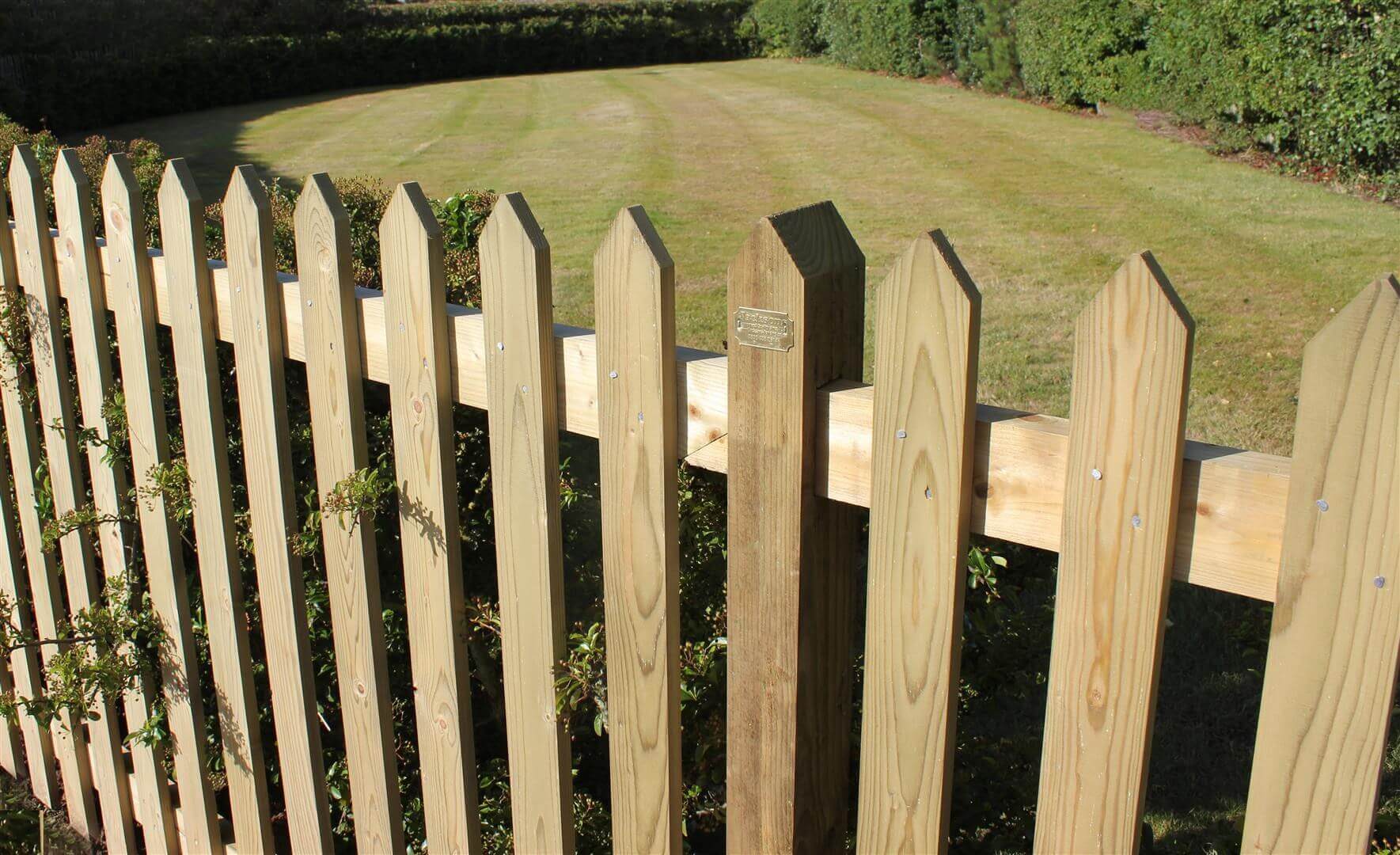
Jacksons have Approved Installers across the country, who are experienced fencing contractors, who have agreed to abide by a code of practice to ensure exceptional customer care and high quality installation – a call to us will put you in touch will someone close to your area or follow this link.
You can see more helpful advice on choosing the right fence by clicking here.Top